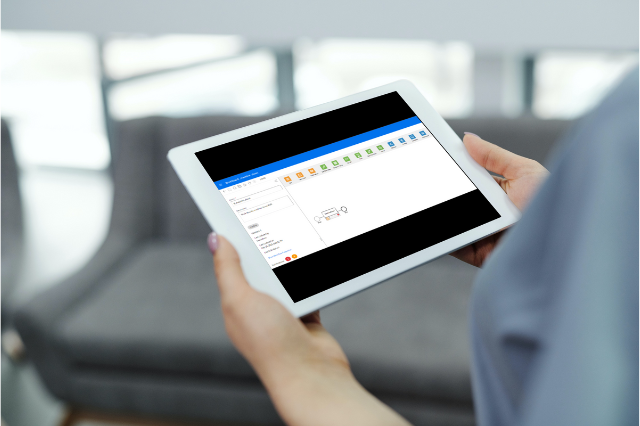For this year’s SyteLine User Conference, we did a presentation on optimising process efficiency using Workflows, Notifications and IDM within the OS Portal.
Yes, that title was a bit of a mouthful, but Matthew and Mark’s demonstration of the process was much more streamlined. We hit the mark with the choice of topic, as our talk was standing-room only, and we’re incredibly proud of that fact.
So what did we cover? First of all, we need to understand what we’re dealing with.
The business problem
A problem that many businesses may be familiar with is the ‘gotchas’ in the sales order approval process. In our scenario, a customer purchase order is received, which equates to a high-value sales order. The documentation for this PO is filed. Misplacing documentation is often the start of the problem. Someone could file the documentation anywhere they choose – there are different SharePoint drives and other local storage silos in use. Often the documentation needs to be found and can’t be found!
Once the Sales Order is created, it must be approved because of its high value. The finance team was unaware that the order needed approval. So the order could be produced and shipped without authorisation.
The other scenario could be that the finance manager is on holiday, so the approval for the order waits for them to rerun, meaning that the order is not shipped because the customer is still on credit hold.
All these variations end up with a problem for the business. Either the order isn’t shipped in time, or it is shipped for which the customer doesn’t have sufficient credit – and in the worst case, may not even pay for it!
None of this is ideal! So what is the solution?
Infor Document Management
The first part of the solution is IDM. IDM allows you to attach documents to different records in SyteLine or CSI. The document is always associated with the right customer, order, purchase invoices etc. This negates the need to store files in SharePoint or elsewhere, where they may get lost or forgotten.
Workflow tasks
The next part of our solution involved workflow tasks. These tasks are triggered when a high-value order is received. Part of the process consists of the finance manager being sent a message requesting approval. Not only did our process do this, it also put the customer on credit hold and removed it once the task was complete.
A few things make this way of working less liable to have issues than manually emailing.
First, a clear audit trail throughout the process allows you to see what has been sent to whom. Secondly, you can change the status of flags such as the ‘credit hold’ and ‘finance approved’. Meaning people don’t need to remember to do this.
Finally, you can use delegation and escalation to move the task to someone else. Delegation and escalation are helpful for holidays. For example, suppose the task is sent to the finance manager for approval. In that case, it can be manually re-routed to someone else, or after a specific amount of time, it can be forwarded to someone else if no approval is received.
Application Event System or ION
When it comes to process automation with SyteLine, you have options.
The first option is to use the Application Event System native to SyteLine. The AES is part of the Mongoose Framework, which is used with external applications such as M3 as part of Infor’s extensibility offering. This gives it flexibility, and being native to SyteLine, it already ‘understands’ what is needed to work with the SyteLine IDOs etc. Whilst the AES is a powerful tool, some users can find it more challenging to work with.
The alternative is to use Infor’s ION for workflows and notifications. We’ve written about this before here…
ION’s advantage is that it’s easy to use. It has an easy-to-use graphical interface that most people like. It sits over multiple Infor products, even ones that are not! You can also use ION to interact with existing workflows created in the Application Event System.
Ultimately the choice is yours.
Five points to consider
If you’re thinking about setting up some automation, here are some points we think are worth considering.
- Where are the potential points of failure in your manual process?
- Have you had issues in this area before?
- Will you have these issues again?
- Are you looking at data flowing between different software?
- Does this make life easier for your users or customers?
If this blog has made you think a little more about where you can use ION, IDM or the Application Event System in your business, but you feel you need some help, why not get in touch?
We’d be happy to discuss your options to get you started with process automation and help find a solution that works for you and your business.

